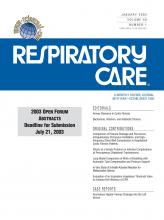Abstract
A 50-year-old woman with life-long hypoxemia and digital clubbing had a transient ischemic attack at age 47, without identifiable vascular or cardioembolic source. Extensive work-up revealed a 20% anatomic shunt (while breathing 100% oxygen) and evidence of an intrapulmonary shunt (an agitated saline, contrast-enhanced transesophageal echocardiogram showed bubbles in the left atrium and in 3 of the 4 visualized pulmonary veins) but without evidence of the hepatopulmonary syndrome, intrapulmonary arteriovenous malformations, or any intracardiac shunt. She had the congenital anomalies of cleft palate and lip and inferior vena caval interruption with azygos continuation, and anomalous hepatic venous drainage into the left atrium. In keeping with the sparse evidence of 12 previously reported patients with anomalous hepatic-venous-to-left-atrial drainage, the intrapulmonary shunt was believed to result from the diversion of hepatic venous blood from the pulmonary circulation. Surgical correction of the anomalous drainage and restoration of hepatic venous drainage into the right atrium immediately improved oxygenation, and follow-up contrast-enhanced echocardiography 3 months after the surgery showed resolution of the associated intrapulmonary shunt. This case extends the sparse available evidence with this unusual combination of congenital anomalies, reminds clinicians to consider unusual causes of right-to-left shunt and of paradoxical embolization, and invites clarification of the mechanism by which anomalous hepatic venous drainage into the left atrium allows reversible intra-pulmonary right-to-left shunt.
Footnotes
- Correspondence: James K Stoller MSc MD FAARC, Department of Pulmonary and Critical Care Medicine, A 90, The Cleveland Clinic Foundation, 9500 Euclid Avenue, Cleveland OH 44195. E-mail: stollej{at}ccf.org.
- Copyright © 2003 by Daedalus Enterprises Inc.







